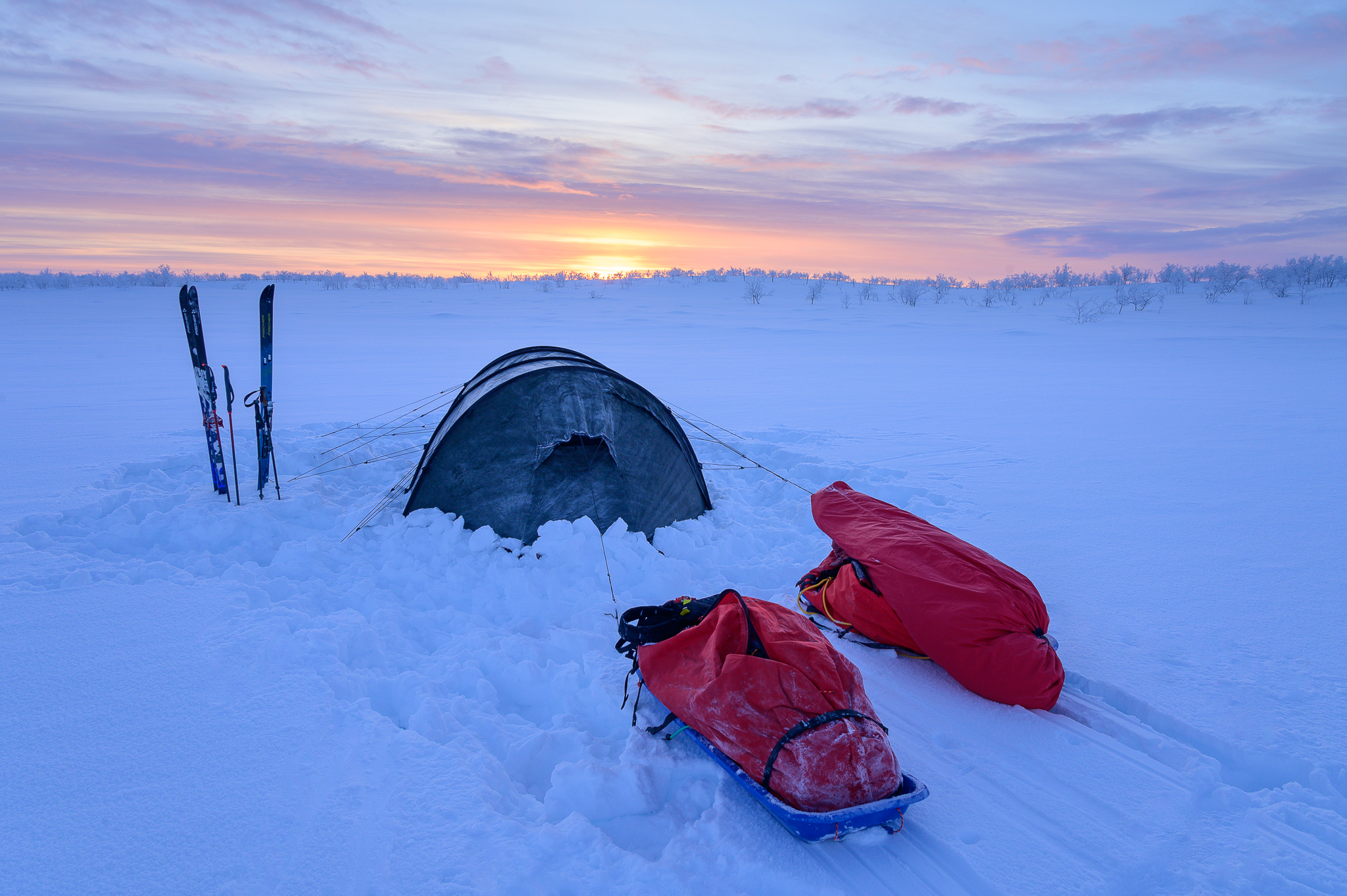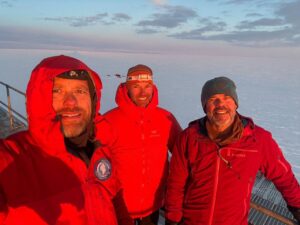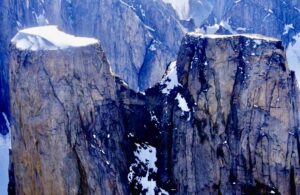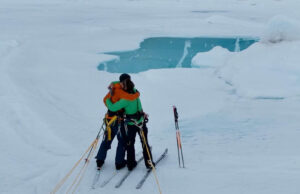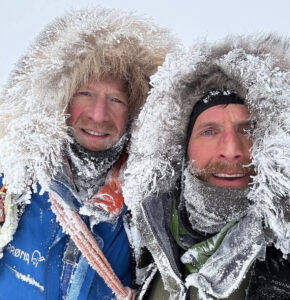A few years ago, I wrote an article for ExplorersWeb about polar training locations in Scandinavia, Canada, and Greenland. Recently, a companion and I ventured to one of these remote spots in northern Norway. The area is gaining popularity among guiding companies as a training ground for polar travel.
Located 400km north of the Arctic Circle, Norway’s Finnmarksvidda Plateau, often known simply as the Finnmark Plateau, offers an ideal blend of accessibility and wilderness.
Travelers can conveniently fly from Tromso or Oslo to the nearby town of Alta. Here, they’ll find a number of excellent outdoor shops and well-stocked supermarkets to prepare for their time on the trail.
One of the most popular sledding routes runs 100-120km from a hamlet near Alta, on Norway’s west coast, to Karasjok, on the Finnish border. This journey follows a historic postal route linking Alta and Karasjok.

The author in low visibility on Finnmark. Frost from cold coats the sled and jacket. Photo: Ash Routen
Most of the route features small birch branches as navigation markers, strategically placed every few hundred meters. These markers guide the snowmobiles that frequently shuttle between mountain huts.
It typically takes novice sledders around a week to cover the route, which passes through forested lowland, crosses a large frozen lake, climbs to barren higher ground, and follows a broad frozen river. The more adventurous can forge off-piste routes across the plateau. The journey can extend into a couple of weeks if you leave the beaten track.
Low temperatures and high winds
While Finnmark is good for sledding from January to April, the optimal time is early February, if you want to train in the coldest temperatures. My partner and I went during the first week of February, and we were fortunate — if that’s the right word — to encounter sustained temperatures below -20°C. By the end of the journey, it had even dropped into the -30s.
Just days before, a friend experienced winds of 70kph on the trail, and a few weeks earlier, he experienced a -50°C night near Karasjok.
Those temperatures teach would-be polar travelers a lot about dealing with cold.
The plateau serves as an excellent prep for Antarctica. At that time of year, it can be even harsher than Antarctica in summer.

There is plenty of open terrain and wind-hardened snow to practice your sled hauling. Photo: Ash Routen
Sometimes, just a week of deep cold is all you need to get the feel of it. My partner is very experienced in the outdoors but was sledding (and skiing) for the first time. By the end of our journey, he had improved his skiing, refined his clothing system, and grappled with the discomfort of frozen face masks and an ice-covered sleeping bag hood. He also discovered the labor involved in setting up camp, shoveling snow, and melting water. Also the mental difficulty of exiting the cozy confines of a sleeping bag each morning.
Short days, few travelers
In early February, travelers must contend with the trade-off of limited daylight, typically around six hours each day, with a bit of twilight on either end for those eager to ski at dusk. There is admittedly a lot of time in camp.
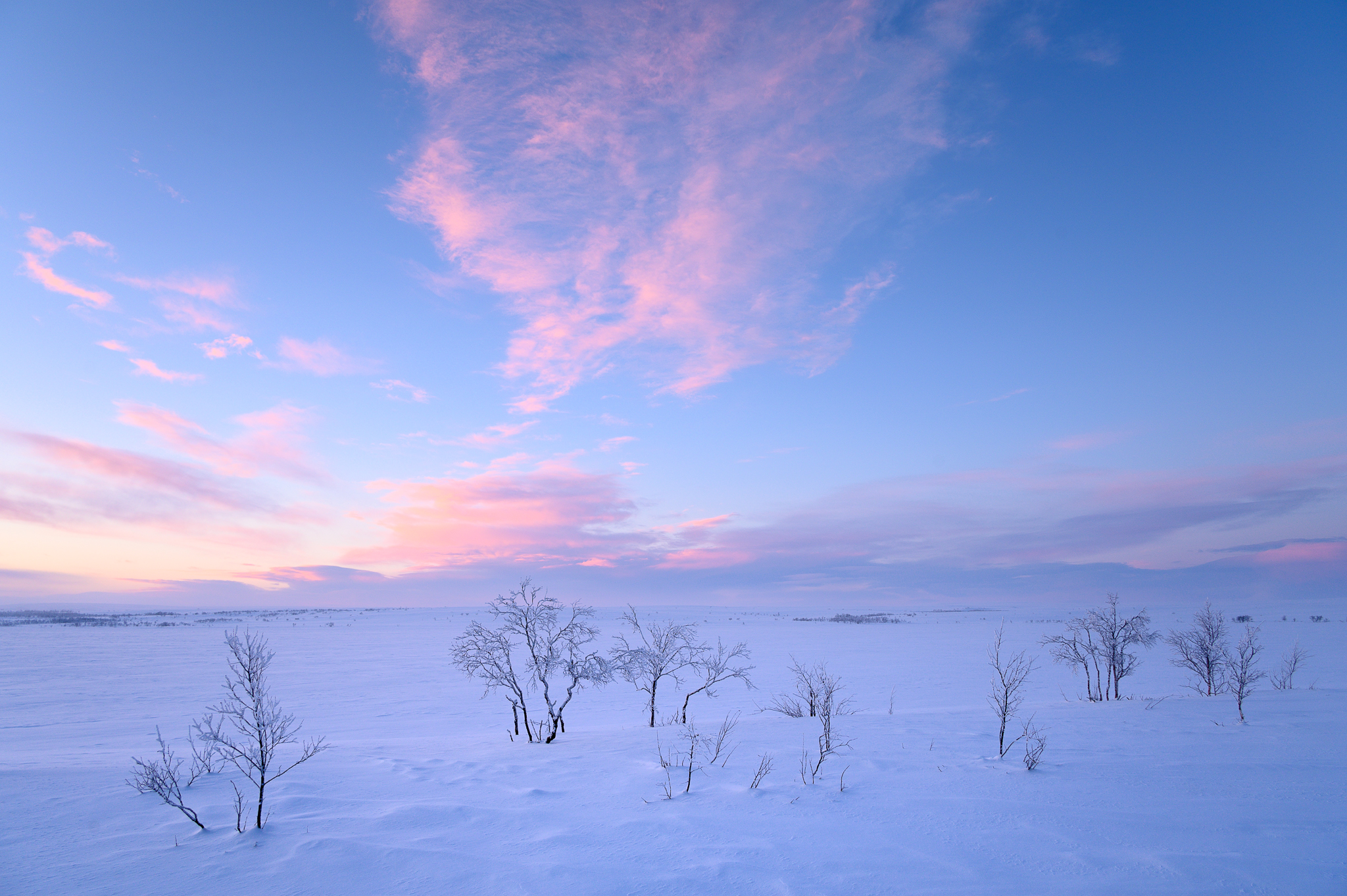
Pastel skies at both ends of the day light the way for winter travelers in Finnmarksvidda. Photo: Ash Routen
A positive of this early season travel is that you are unlikely to see anyone else on the trail. Many experienced locals enjoy the plateau after the winter harshness abates. So as with most arctic wildernesses in Scandinavia, early is best if you want to replicate an expedition experience.
